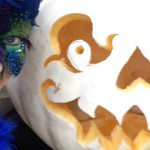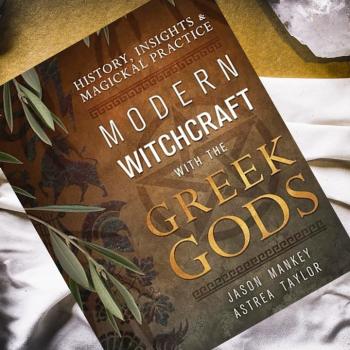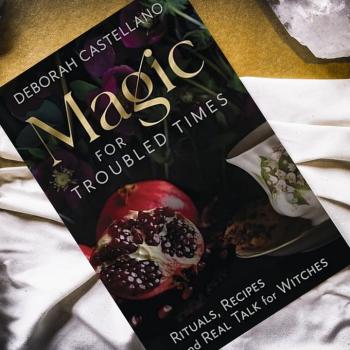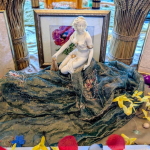Like many of the witches tools, the broom is a common household item. One that in fact, used to be generally homemade. Although most folks now have a nylon or straw broom from the hardware store, people used to make their own brooms or buy them from local artisans. They were made of bound twigs or grasses on a straight handle.
Of course the witches brooms hold secrets hidden it is brush or carved on its handle. Making your own broom can be a simple home craft, if you are able to gather sticks, brush and stones from your area. My broomstick has three main parts: the broom handle, the stone and the brush. This particular style is adapted from the Cochrane letters using traditional components.
Begin by finding a forked cane sized branch. I tend to gather mine from windfall branches after a storm because those sticks have so much wind in them. I chose a maple branch as the wood has strong flying ability as well. I had the good fortune to cut a number of forked staffs from a branch that fell from a maple during a storm last autumn. They are all properly seasoned now, dry and strong. Although it is best to season gathered wood before using it, for the purposes of a broomstick it is okay to use a fresh cut branch and drying ahead of time is optional.
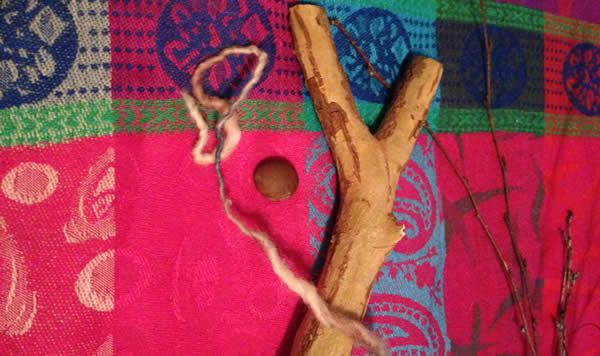
I hand sawed the forked branch to be even and smoothed off any smaller branches poking out. I left the underbark on the branch, however you can sand and seal your branch to show the grain of the wood if you prefer. Some traditional woods for the broomhandle are Ash, Rowan and Ragwort.
Next you need to find a good stone. I chose a cornelian river stone I found in the woods. Cornelian is a stone used traditionally for spirit flight and as talismans back into ancient times. Other excellent rocks include emerald, hagstones, quartz, jasper and moonstone.
Upon finding the perfect stone, throw it up into the air three times and catch it and say something like:
“Spirit of good omen who came to my aid,
I ask thee in this pebble find thy home
Oh my red sprite come to me
and whilst I sleep pull my hair
and bring me to the witches hill
and in the morning when all spirits go
bear me through the night unto my bed!”(adapted by Sara Star from Gospel of Aradia by Charles Leland and Maddelena)
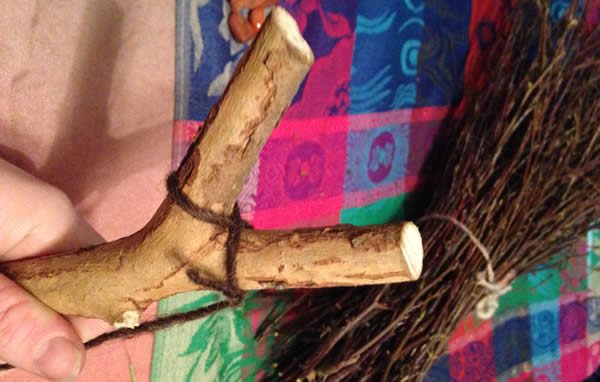
I tied my cornelian river rock between the legs of the forked staff with some homespun goat wool yarn. Goats have a strong presence in the iconography of witchcraft because they were common domestic animals for their milk, wool and meat and also they are clever independent creatures known in legend to fly witches to their festivities. You should attach your stone with string or glue that you have handy. I chose from between red ribbon, black cotton yarn, hemp twine and silver thread when deciding for this project.
Secure the yarn to the fork like the image and then secure the stone by wrapping it and tying it off below the neck of the fork. This will be covered by the brush later so you don’t have to make it pretty. Since I was taking photos for these instructions I went ahead and made a witch’s foot symbol on it like this with the yarn.

This morning I collected birch twigs. They are mostly bare in autumn and you can gather fallen bundles or trim the long hanging branches. Many kinds of twigs and grasses make an excellent brush: wild grasses, cedar, juniper, willow, reeds, and dried herbs like lavender. Gather the brush material in a pile and make a furrow in it to lay your forked handle into.
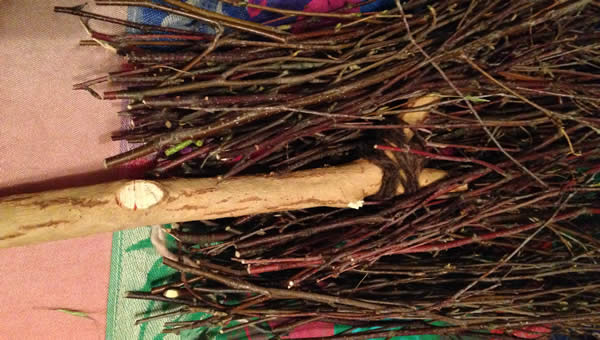
I used another color of yarn, but you could use ribbon, twine, flexible bark like cedar or binding like willow withies to bind your brush. I tied mine tightly three times because three is such a mystical number for witchery. I let my brush taper and get ragged which creates the rustic look, but needs extra rows of binding. If you prefer the neater straight brush look you can cut yours evenly at the bottom and probably bind it only once or twice.
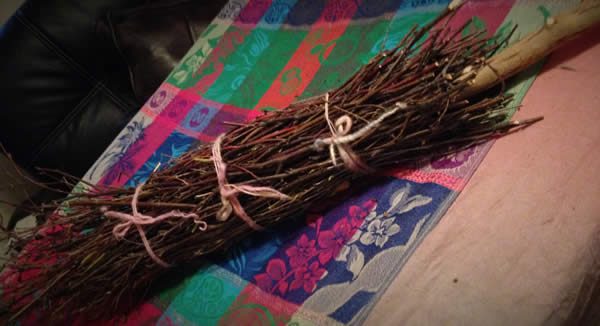
I suggest personalizing your broom by tying charms onto the brush and carving or painting the handle. I added a white goose feather to mine because it was shed from a gander I know and gooses are traditional animals that flew witches to their adventures.
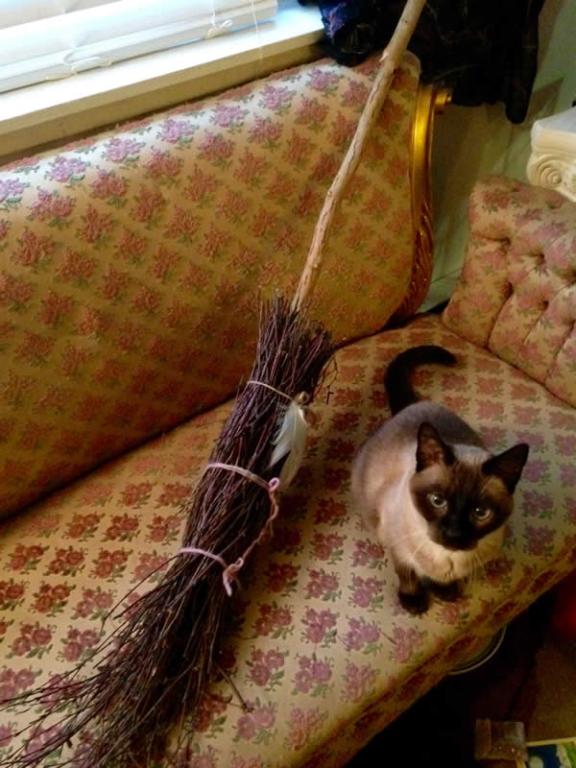
Broom Blessing
Adapted from Carmena Gadelica Traveling Charm
By Sara Star
Blessed to be my broom
the sky beneath my feet
Blessed to be my flight
the path whereon I go
Blessed to be within myself
the thing of my desire.
Evermore of evermore.
Blessed to be the thing
whereon I set my mind
Blessed to be the thing
whereon I set my love
Blessed to be the thing
whereon I set my hope
Evermore of evermore
Blessed to be thine witch’s flight.

Patheos Pagan on Facebook.

the Agora on Facebook
Star Made Witch is published bi-monthly on alternating Mondays here on the Agora. Subscribe via RSS or e-mail!
Please use the links to the right to keep on top of activities here on the Agora as well as across the entire Patheos Pagan channel.



